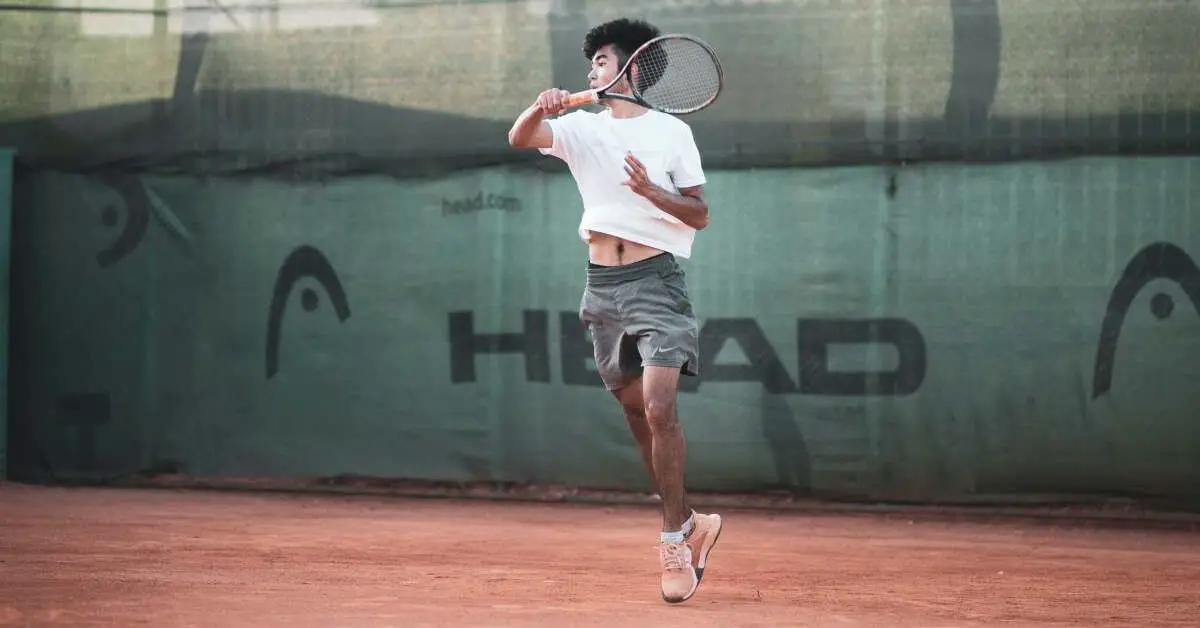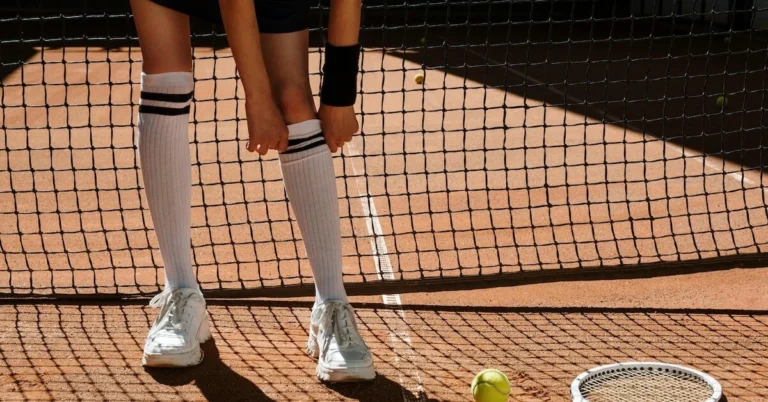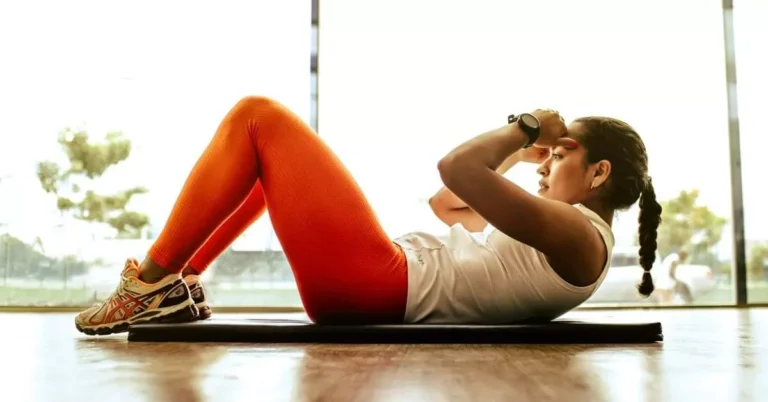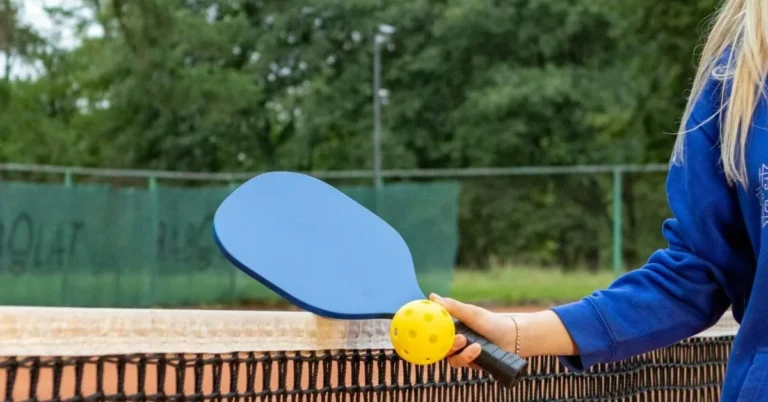Let’s embark on a delightful journey into the world of mastering the forehand volley in tennis. Picture this: a graceful and decisive stroke that leaves your opponent in awe, akin to a magician pulling off a mesmerizing trick.
Join me as we unravel the secrets behind this essential shot, sprinkling in a touch of lightheartedness to make our learning experience as enjoyable as a well-placed volley. So, grab your racquet and get ready to elevate your game with the art of the forehand volley in tennis.
Pro:
✅ best all-rounder ✅ stability ✅ high support
Con:
❌ maybe you need some time to get used to it
Understanding the Forehand Volley
The forehand volley is a shot that is executed when a player is positioned at the net and the ball is hit towards them. It is an important shot in tennis that can help you win more points at the net. Unlike the traditional forehand shot, the forehand volley is executed with a shorter backswing and requires quick reflexes and good hand-eye coordination.
To execute a forehand volley, you need to be in the right position at the net. You should be positioned with your non-dominant foot forward and your dominant foot back. This is known as the “ready position” and it allows you to move quickly in any direction. Your knees should be slightly bent and your weight should be evenly distributed on both feet.
When the ball is hit towards you, you should take a small step forward and use a “continental grip” to hold the racket. This grip is where the base knuckle of your index finger is on the third bevel of the racket handle. It allows you to maneuver the racket quickly and adjust your hand position for different shots.
As the ball approaches, you should take a small hop or “split step” to help you prepare for the shot. This involves jumping slightly in the air and then landing on both feet as the ball comes towards you. It helps you get into position quickly and allows you to move in any direction.
When you are ready to hit the ball, you should keep your wrist firm and your elbow close to your body. You should swing the racket forward with a short backswing and make contact with the ball in front of your body. You should aim to hit the ball with a flat racket face and follow through towards your target.
Grip and Ready Position

Grip Basics
Before you can hit a forehand volley in tennis, you need to have the right grip. The grip you use for a forehand volley is different from the grip you use for a groundstroke. For the forehand volley, you should use the continental grip, which is also known as the “chopper grip”. This grip allows you to hit the ball with the strings facing slightly upwards, which helps you to generate topspin and control the ball better.
To get into the continental grip, hold your racket with your non-dominant hand and place the base of your index finger on the third bevel (counting from the top) of the racket handle. Then, slide your hand down the handle until you reach the bottom. Your index finger should be touching the bottom of the handle, and your thumb should be on the other side of the handle.
Getting Into Ready Position
Once you have the right grip, you need to get into the right ready position. The ready position is the stance you take when you’re waiting for your opponent to hit the ball. To get into the ready position for a forehand volley, stand with your feet shoulder-width apart and your knees slightly bent. Your weight should be evenly distributed on both feet, and your body should be facing the net.
Hold your racket out in front of you with your elbow bent and the head of the racket pointing upwards. This position allows you to react quickly and efficiently to the incoming ball. Your eyes should be focused on your opponent’s movements, anticipating their shot.
Good posture and balance are essential for hitting an effective forehand volley. Keep your back straight, and your head up, so you can see the ball clearly. Make sure your weight is balanced on both feet, so you can move quickly in any direction.
Technique for Forehand Volley
If you want to hit a successful forehand volley in tennis, you need to have proper technique. Here are 3 key elements you need to focus on to improve your forehand volley:
1. Footwork and Body Positioning
The first step in hitting a forehand volley is to get into the right position. As your opponent hits the ball, move towards the net with quick, small steps. When you get close to the net, do a split step to prepare for the ball. Keep your knees bent and your bodyweight forward, so you’re ready to move in any direction.
As the ball approaches, position yourself so that your non-racket hand is in front of your body and your racket is in a ready position. Your feet should be shoulder-width apart, and your body should be turned slightly to the side.
2. Swing and Contact
When the ball is within reach, swing your racket forward and make contact with the ball in front of your body. The point of contact should be in front of your lead foot, and you should hit the ball with a short, compact swing.
As you make contact with the ball, keep your wrist firm and your elbow close to your body. This will help you control the ball and direct it where you want it to go.
3. Follow Through
After you make contact with the ball, follow through with your swing. Your racket head should continue forward, and your non-racket hand should move towards the target. This will help you generate power and control the ball’s direction.
Remember to keep your swing short and compact, as this will give you more control over the ball. With practice, you’ll be able to hit forehand volleys with ease and accuracy.
Power and Accuracy
When it comes to hitting a forehand volley in tennis, generating power and maintaining accuracy are two essential elements that you need to master. In this section, we will discuss how to generate power and maintain accuracy to hit a forehand volley like a pro.
Generating Power
To generate power, you need to use your arm strength and forearm strength. One of the most common mistakes that players make is using too much arm and not enough wrist. To generate power, you need to use both your arm and wrist in a coordinated manner.
One way to generate more power is to use a continental grip. This grip allows you to hit the ball with more power because it allows you to use your wrist more effectively. Another way to generate more power is to step into the ball. By stepping into the ball, you can transfer your weight from your back foot to your front foot, which will help you generate more power.
Maintaining Accuracy
To maintain accuracy, you need to focus on control and consistency. One way to maintain accuracy is to keep your eye on the ball. By keeping your eye on the ball, you can ensure that you are hitting the ball in the right spot. Another way to maintain accuracy is to focus on your follow-through. Your follow-through should be smooth and fluid, which will help you maintain accuracy.
It is also important to focus on hitting the ball in the right spot on the racket. Hitting the ball in the sweet spot of the racket will help you maintain accuracy and generate more power.
Finally, it is important to avoid errors by staying relaxed and focused. Tension can cause errors, so it is important to stay relaxed and focused on the ball.
By following these tips, you can generate more power and maintain accuracy to hit a forehand volley like a pro.
Advanced Techniques
Once you have mastered the basic techniques of hitting a forehand volley, you can start incorporating some advanced techniques to take your game to the next level. In this section, we will cover two of the most important advanced techniques: applying spin and using the serve and volley tactic.
Applying Spin
One of the most effective ways to add variety to your forehand volley is by applying spin to the ball. Spin can help you control the direction and pace of the ball, making it more difficult for your opponent to return. There are two types of spin that you can apply to your forehand volley: topspin and slice.
To apply topspin, you need to brush up on the ball with your racket strings. This will create a forward and upward spin that will cause the ball to dip down faster over the net. On the other hand, to apply slice, you need to brush down on the ball with your racket strings. This will create a backward and downward spin that will cause the ball to bounce lower and skid off the court.
Serve and Volley
The serve and volley tactic is a great way to end the point quickly and put pressure on your opponent. To use this tactic, you need to have a strong serve and be able to move quickly to the net after serving. Once you get to the net, you can hit a forehand volley to end the point.
To execute the serve and volley tactic, you need to start by hitting a strong serve that lands deep in the court. This will give you time to move to the net before your opponent returns the ball. Once you get to the net, you need to be ready to hit a forehand volley. Keep your racket up and be prepared to move quickly to either side of the court to hit the volley.
In addition to these advanced techniques, there are many other strategies and tactics that you can use to improve your forehand volley and your overall net game. Keep practicing and experimenting with different techniques to find what works best for you.
Drills and Practice
Improving your forehand volley in tennis requires consistent practice and drills.
Solo Drills
Solo drills are a great way to improve your technique and endurance. One of the best solo drills for forehand volley is the wall drill. Stand about 6-8 feet away from the wall, and practice hitting the ball against the wall using your forehand volley technique. This drill will help you improve your concentration and hand-eye coordination. Another solo drill you can do is the T drill. Set up cones or markers in the shape of a T and practice hitting the ball to each cone using your forehand volley technique. This drill will help you improve your footwork and accuracy.
Partner Drills
Partner drills are a great way to practice your forehand volley in a more realistic setting. One partner can hit the ball to the other partner, who will then hit a forehand volley back. This drill will help you improve your timing and reaction time. Another partner drill you can do is doubles tennis. Playing doubles tennis will give you the opportunity to practice your forehand volley in a game-like situation.
Remember to practice consistently and focus on improving your technique. With time and effort, you will see improvement in your forehand volley.
Learning from the Pros
If you want to improve your forehand volley in tennis, one of the best ways to learn is by studying the techniques of the pros. Roger Federer is widely regarded as one of the best forehand volleys in the game, and you can learn a lot by watching his technique. One of the keys to Federer’s success is his ability to get into the right position quickly and efficiently. He also uses a continental grip, which is ideal for hitting volleys.
Another great resource for learning about the forehand volley is the Bryan Brothers. These twins have won numerous doubles titles and are known for their exceptional volleying skills. They emphasize the importance of having a strong foundation and using proper footwork to get into position for the volley. They also recommend keeping your eyes on the ball and using a compact swing to make contact.
When learning from the pros and experts, it’s important to keep in mind that everyone has their own unique style and approach. While it’s important to study the techniques of successful players, you should also experiment and find what works best for you. With practice and dedication, you can improve your forehand volley and take your game to the next level.
Common Mistakes and Corrections
When it comes to hitting a forehand volley in tennis, there are some common mistakes that players make. Here are 5 of them and how to correct them:
1. Not staying compact
One of the most common mistakes is not staying compact when hitting a forehand volley. This means that players tend to swing their racket too far back, which can cause them to lose control of the ball. To correct this, make sure to keep your racket close to your body and use a shorter backswing.
2. Hitting the ball too high or too low
Another mistake that players make is hitting the ball too high or too low. If you hit the ball too high, it will likely go out of bounds, while hitting it too low can cause it to hit the net. To avoid this, make sure to keep your racket at the appropriate height for the ball you are hitting.
3. Using the wrong grip
Using the wrong grip is another common mistake. Players often use their thumb and index finger to grip the racket, which can cause them to lose control of the ball. Instead, use a continental grip, which involves placing your hand on the racket handle so that your thumb and index finger form a “V” shape.
4. Popping the ball
Popping the ball is a mistake that occurs when players hit the ball too hard. This can cause the ball to pop up, making it easier for the opponent to return. To avoid this, use a softer touch and focus on hitting the ball with more control.
5. Not following through
Finally, another common mistake is not following through with your swing. This means that players stop their swing too soon, which can cause the ball to lose speed and accuracy. To avoid this, make sure to follow through with your swing and extend your arm and wrist.
By avoiding these common mistakes and making the necessary corrections, you can improve your forehand volley in tennis and become a better player.
FAQ
What is the proper grip for a forehand volley in tennis?
The proper grip for a forehand volley in tennis is the continental grip. This grip allows you to maneuver the racket quickly and adjust your hand position for different shots. To achieve this grip, place the base knuckle of your index finger on the third bevel of the racket handle.
What are some tips for hitting a successful forehand volley?
To hit a successful forehand volley in tennis, keep your eyes on the ball at all times, maintain a low center of gravity, and use a compact swing. Additionally, it’s important to use a proper grip, keep your elbows more or less parallel to the ground, and use a light grip pressure.
What are the fundamentals of hitting a forehand volley in tennis?
The fundamentals of hitting a forehand volley in tennis include a proper grip, a low center of gravity, and a compact swing. You should also keep your eyes on the ball, use a light grip pressure, and keep your elbows more or less parallel to the ground.
Can you describe an advanced technique for hitting a forehand volley?
An advanced technique for hitting a forehand volley in tennis is the punch volley. To execute this technique, you need to use a short backswing and a punch-like motion. This technique allows you to hit the ball with more speed and power.
What is the correct elbow position for hitting a forehand volley in tennis?
The correct elbow position for hitting a forehand volley in tennis is off of your body. Avoid resting your elbow in your stomach because this posture may delay your volley shot. Always keep your elbows more or less parallel to the ground. This posture allows you to quickly react and hit the forehand volley once the ball arrives.
How does hitting a forehand volley in tennis differ from hitting a forehand groundstroke?
Hitting a forehand volley in tennis differs from hitting a forehand groundstroke in that you need to use a shorter swing and a lighter grip pressure. Additionally, you need to maintain a low center of gravity and keep your eyes on the ball at all times.
We’ve delved into the art of executing the perfect forehand volley in tennis, where finesse meets agility at the net. Whether you’re perfecting your net game or envisioning a comical ballet of volleying prowess, there’s no denying the grace and occasional hilarity that accompanies this essential skill.
So, what’s your take on mastering the forehand volley? Have you witnessed any amusing volleying escapades or perhaps have your own humorous tales of net triumphs and follies to share? We’d love to hear your thoughts, anecdotes, or even your wittiest forehand volley-related jests in the comments below!







